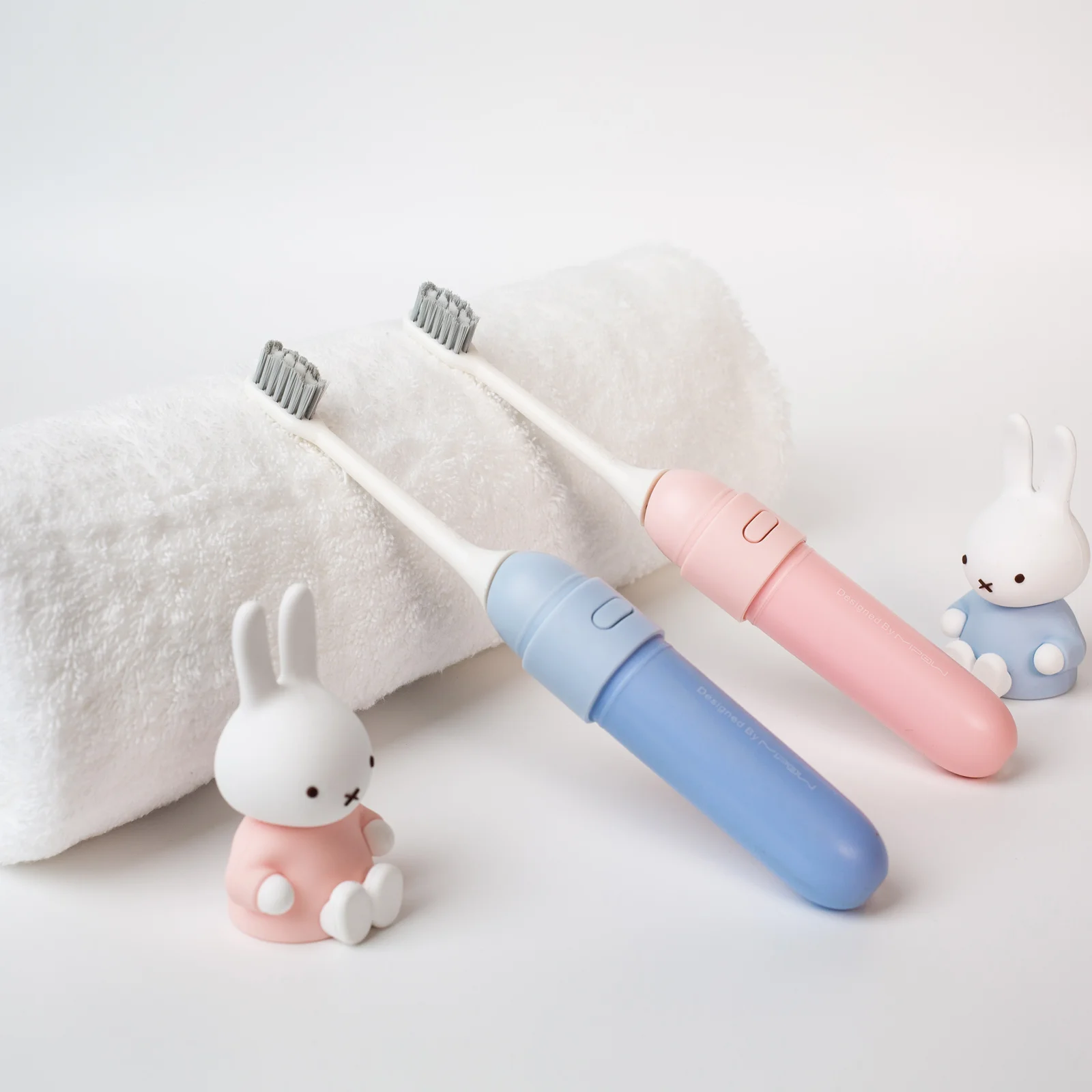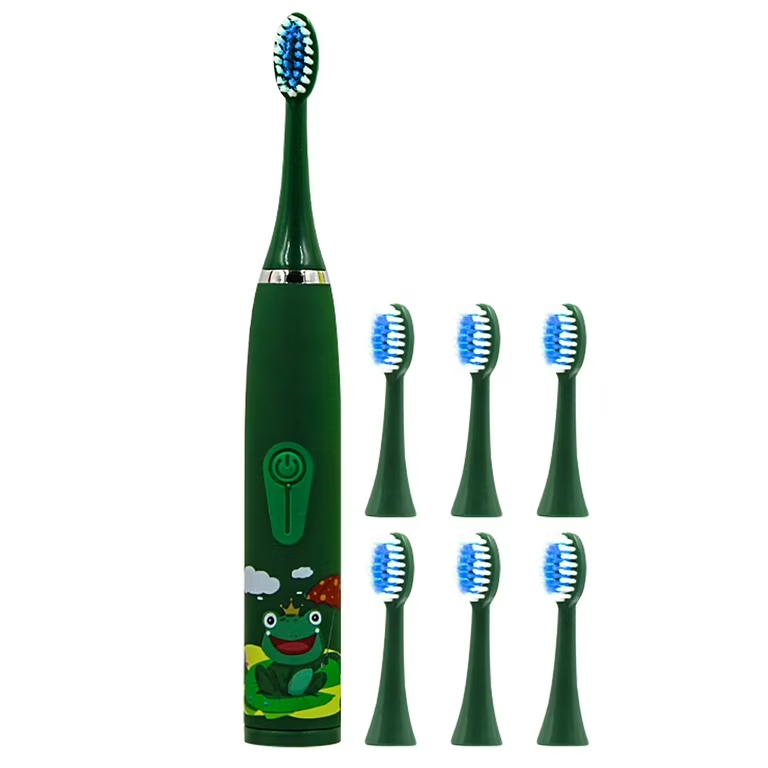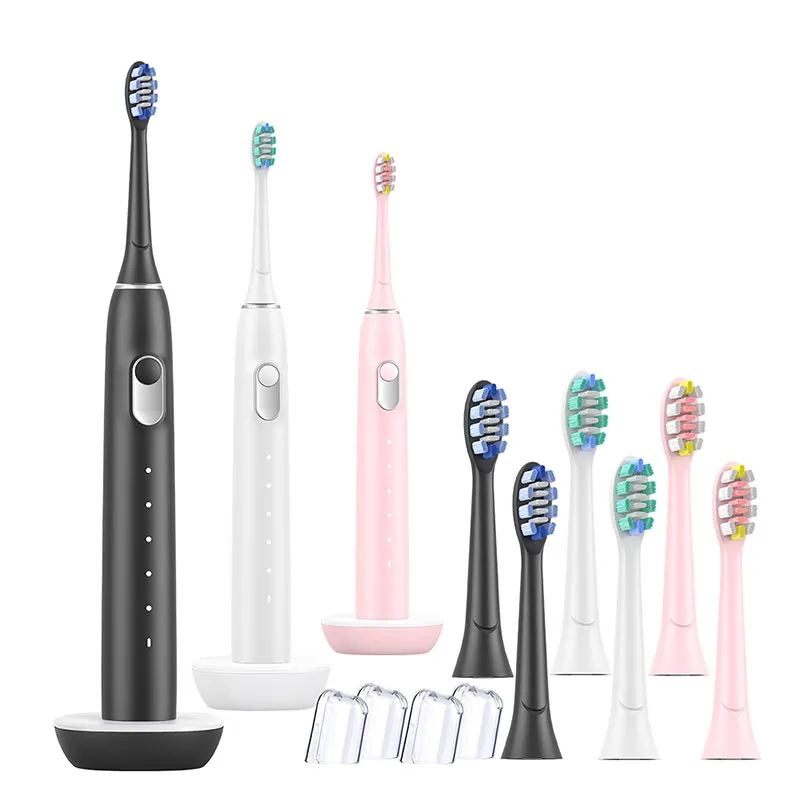Introduction: Does electric toothbrush clean better
The battle between electric and manual toothbrushes for oral health superiority has long been debated. In your journey for better dental hygiene, it’s crucial to understand the types of toothbrushes available and how they operate. Electric toothbrushes boast advanced technologies such as rotating or vibrating bristles to assist in the cleaning process. Manual toothbrushes rely on your own brushing technique to sweep away plaque and debris. Both types offer unique benefits and can be effective when used correctly and consistently. As we delve deeper, keep in mind that choosing the right toothbrush goes beyond just type—it’s about finding what aligns with your oral health needs and lifestyle preferences.

Electric Toothbrush Benefits
Electric toothbrushes bring several advantages to the table. Let’s explore these benefits:
More Effective Plaque Removal
Electric toothbrushes are designed to be more efficient at removing plaque. Their bristles rotate or vibrate, helping to break down and sweep away plaque more effectively than manual brushing.
Easier for People with Limited Mobility
Those with mobility issues, such as arthritis or developmental disabilities, may find electric toothbrushes especially useful since they require less manual effort.
Built-In Timers for Consistent Brushing
Many electric toothbrushes include timers to ensure you brush for the recommended two minutes. This helps maintain good brushing habits.
May Reduce Waste with Replaceable Heads
Electric toothbrushes often have replaceable heads, which means less waste as you’re not discarding the entire toothbrush each time it needs replacing.
Enhanced Focus and Oral Health for Orthodontic Patients
People with braces might benefit from using electric toothbrushes. They make it easier to clean around orthodontic appliances, maintaining better oral hygiene.
Making Brushing Fun for Kids
For children who are less enthusiastic about brushing, electric toothbrushes can make the routine more engaging, promoting better oral care practices from a young age.
The Downsides of Electric Toothbrushes
While electric toothbrushes offer several benefits, they also come with some drawbacks.
Higher Cost and Maintenance
Electric toothbrushes tend to be more expensive than their manual counterparts. The initial investment and ongoing cost of replacement heads can add up.
Potential Accessibility Issues for Replacement Heads
Finding the right replacement heads might be a challenge, especially in stores. Online purchases could solve this but may not be ideal for everyone.
Not Ideal for International Travel
For those who travel abroad, plug-in electric toothbrushes may not be convenient due to different power outlets and voltage requirements.
Possible Discomfort from Vibrations
Some people may find the vibrating sensation of electric toothbrushes uncomfortable. Saliva movement caused by the vibrations can also be messy.
Advantages of Manual Toothbrushes
While electric toothbrushes have their perks, manual toothbrushes remain a steadfast component in daily oral hygiene.
Wide Accessibility and Immediate Availability
You can find manual toothbrushes almost everywhere—from supermarkets to gas stations. They’re always ready for use, needing no charging or batteries.
Affordability for Everyone
Manual toothbrushes are budget-friendly. They cost only a few dollars, making them accessible to all income levels.
Cons of Using Manual Toothbrushes
Despite their popularity and affordability, manual toothbrushes have some limitations that can impact oral health.
Tendency to Brush too Hard
One of the common issues with manual toothbrushes is the tendency to brush too hard. Applying excessive pressure can damage gums and enamel, leading to sensitivity and receding gums. It is important to use gentle strokes when brushing.
Lack of Built-In Timer
Manual toothbrushes lack built-in timers, which are helpful in ensuring you brush for the full two minutes as recommended by dentists. Without a timer, it’s easy to cut brushing short, potentially leaving plaque behind.
 Considerations for Children’s Toothbrushes:
Considerations for Children’s Toothbrushes:
does electric toothbrush clean better
As a parent or guardian, the dental health of your child is a high priority. When it comes to children’s oral care, choosing the right toothbrush can make a significant difference. Factors to consider include the size of the toothbrush head, the type of bristles, and the overall design that can influence how effectively a child cleans their teeth.
Choosing the Right Toothbrush for Kids
Selecting a toothbrush for children isn’t just about the color or characters on the handle. Here are key tips:
- Look for a Child-Friendly Size: A smaller toothbrush head is best for kids. It fits their mouths and reaches all teeth.
- Soft Bristles Are Essential: Kids’ toothbrushes should have soft bristles to protect young, delicate gums from damage.
- Manual or Electric?: Both types can work well. If your child finds electric toothbrushes more fun, they might brush better.
- Handle Grip Matters: A toothbrush with a chunky, non-slip handle can make it easier for little hands to grip.
- Engaging Design: Bright colors or favorite characters can motivate kids to brush regularly.
The goal is always to make brushing a positive experience. This encourages good oral hygiene habits that can last a lifetime. Remember, the ADA suggests replacing any toothbrush every three to four months or sooner if the bristles look worn. This applies to both manual and electric toothbrush models. For parents overseeing their children’s dental care, making the right toothbrush choice is a step towards ensuring a healthier future for their children’s teeth.
When to Replace Your Toothbrush
Proper oral hygiene isn’t complete without regular toothbrush replacement. The American Dental Association (ADA) recommends changing your toothbrush every three to four months. Keep in mind, you might need to replace it sooner if the bristles become frayed or if you have been sick. Using a worn toothbrush reduces the efficacy of your brushing efforts, as worn and splayed bristles cannot clean teeth as effectively.
Importance of Regular Toothbrush Replacement
Frequent toothbrush replacement is key for maintaining effective oral health. Here are a few reasons why:
- Prevents Bacterial Build-Up: Over time, toothbrush bristles can harbor bacteria. Regular replacement helps keep your brush clean.
- Ensures Maximum Cleaning Power: Fresh bristles are more effective at removing plaque and preventing gum disease.
- Protects Oral Health: An old toothbrush may harm your gums or not clean well, possibly leading to dental issues.
- Boosts Oral Care Routine: A new toothbrush can revitalize your commitment to oral hygiene.
Stick to these guidelines to ensure your brushing is helping, not hindering, your dental health. Remember to choose a toothbrush that feels comfortable and suits your needs, whether it’s manual or electric.
Proper Brushing Technique
Regardless of the toothbrush type you use, the key to maintaining oral health is proper brushing technique. Using the right method ensures that all plaque is removed and your gums are protected. Let’s walk through the steps for the most effective oral hygiene practices.
Steps for Effective Oral Hygiene Practices
- Choose the Right Size: Pick a toothbrush that fits comfortably in your mouth and can reach all areas.
- Soft Bristles Only: Always use a soft-bristled toothbrush to avoid harming your gums and enamel.
- Right Angle: Hold the brush at a 45-degree angle to your teeth and gums for proper cleaning.
- Gentle Circles: Use gentle, circular motions to clean the outer and inner tooth surfaces.
- Don’t Forget the Back: Brush the chewing surfaces and the back side of each tooth with care.
- Two-Minute Rule: Brush for at least two minutes, spending equal time in each quadrant of your mouth.
- Regular Replacement: Change your toothbrush or electric toothbrush head every three to four months.
- Daily Flossing: Floss once a day to remove debris between teeth that a toothbrush can’t reach.
- Rinse Your Brush: After brushing, rinse your toothbrush thoroughly and store it upright to dry.
By following these steps, you’ll ensure your teeth are clean and your oral health is at its best. Remember, technique matters just as much as the toothbrush you choose.
 The Final Verdict: does electric toothbrush clean better
The Final Verdict: does electric toothbrush clean better
Does electric toothbrush clean better? It is a personal choice. Both can clean your teeth effectively if used properly. Let’s consider your individual needs and preferences to make the best decision.
How to Choose the Right Toothbrush for Your Needs
When selecting a toothbrush, here are some points to guide you:
- Assess Your Budget: Electric toothbrushes cost more, which includes the unit and ongoing costs for heads.
- Consider Mobility Issues: If you struggle with movement, electric options might make brushing easier.
- Think About Travel Habits: Frequent travelers might prefer the convenience of manual toothbrushes.
- Choose Based on Ease of Use: Some people find electric versions easier and more motivating to use.
- Look at Oral Health: For braces or other dental work, electric toothbrushes might help with hard-to-reach spots.
- Factor in Waste: Electric toothbrushes with replaceable heads could be less wasteful.
- Focus on Comfort: If vibrations bother you, a manual toothbrush might be better.
- Reflect on Lifestyle: Your daily routine and habits can influence which type fits better into your life.
In the end, does electric toothbrush clean better? The best toothbrush is the one that you will use regularly and correctly. Whether you choose electric or manual, ensure you replace it every three to four months as recommended. By considering these aspects, you’ll be well on your way to maintaining your oral health efficiently.